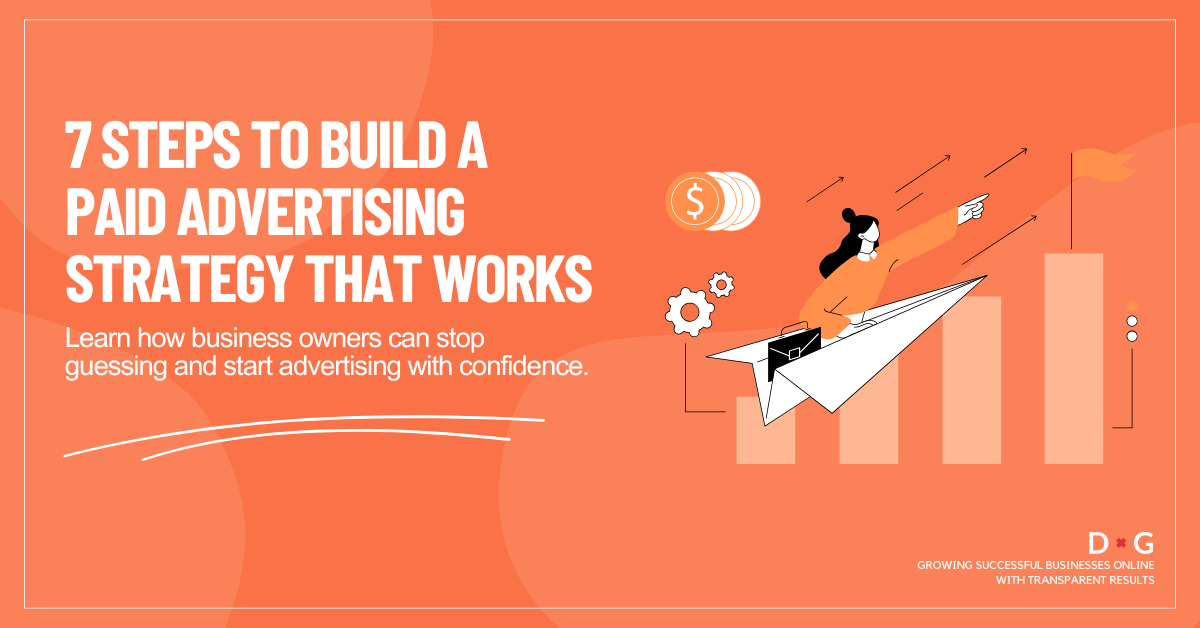
Paid Advertising Strategy is the backbone of any successful digital marketing effort. Without it, businesses often find themselves wasting money on ads that don’t deliver results. Too many business owners launch campaigns by boosting a post or running a Google ad, only to be disappointed when the returns don’t match the spend.
The truth is simple: a successful campaign doesn’t start with the ad itself; it begins with the strategy behind it. When you have a solid Paid Advertising Strategy, every dollar you spend has direction, every ad has purpose, and every result is measurable.
This guide breaks down the 7 essential steps to building a paid advertising strategy that delivers real results. Whether your goal is to increase sales, generate steady leads, or enhance brand visibility, these steps will help you create a plan that works.
Why Having a Paid Advertising Strategy Matters
Paid advertising isn’t just about being visible online. It’s about being visible to the right people, at the right time, with the right message. Without a strategy, your campaigns risk becoming costly experiments.
A well-planned Paid Advertising Strategy helps you:
- Focus on clear, measurable goals.
- Target the people most likely to buy.
- Select the right platforms for maximum impact.
- Deliver offers that compel clicks and conversions.
- Continuously improve performance based on data.
Think of it like building a house: without a blueprint, you’ll waste materials, time, and money. With a blueprint, you know exactly what to do at each stage, and the result is something strong and profitable.
Step 1: The WHAT
Set clear goals.
Every strategy begins with clarity. Ask yourself: What do I want from this campaign?
- More sales?
- Quality leads?
- Greater brand awareness?
Your goal defines everything else, from ad copy to budget allocation.
Each goal requires a different approach:
- Sales-focused? Structure your campaign to optimise for conversions.
- Chasing leads? Direct users to fill out a form, book a call, or download a resource.
- Want more brand awareness? Choose campaign types that maximise impressions and reach.
Pro Tip: Stick to one primary goal per campaign. Trying to sell and build awareness at the same time often dilutes your results.
Step 2: The WHO
Know your audience.
You can’t sell to everyone, and you don’t need to. The more specific you are about your audience, the stronger your ad performance will be.
Start by identifying:
- Demographics: age, gender, income, location.
- Psychographics: values, interests, motivations.
- Pain points: problems your product or service solves.
Tools to use:
- Google Analytics – learn who’s visiting your website.
- Meta Insights – see the behaviours and interests of your followers.
- Customer surveys – hear directly from real people.
Pro Tip: Create a customer persona. Write down one “ideal buyer” with details like their daily habits, challenges, and online behaviour. Build your ads as if you’re speaking directly to that person.
Step 3: The WHY
Nail your offer.
Your ad is only as strong as your offer. Ask yourself: Why should someone click?
Examples of offers that convert:
- Discounts or promos (e.g., 20% off for first-time buyers).
- Free consultation or trial.
- Limited-time exclusives.
Your offer should be:
- Clear (easy to understand in seconds).
- Compelling (valuable enough to spark action).
- Relevant (aligned with your audience’s needs).
Pro Tip: Test urgency-based offers (like “48 hours only”). Urgency often increases conversion rates by 20 – 30%.
Step 4: The WHERE
Choose the right platform
Each platform has strengths. Your job is to match your audience and goal to the right one.
- Google Ads is best for people actively searching for your solution.
- Meta Ads (Facebook & Instagram) is perfect for broad targeting, storytelling, and visuals.
- LinkedIn Ads is designed for B2B and professional services.
- YouTube or TikTok Ads are ideal for younger demographics and video-driven campaigns.
Pro Tip: Don’t spread yourself too thin. Focus on one or two platforms where your audience is most active and scale from there.
Step 5: The WHEN
Plan your timing.
Timing can make or break an ad campaign. Launching at the wrong time means wasted spend.
Consider:
- Seasonal demand like holidays, school breaks, end of the financial year.
- Your customer journey stages like awareness, consideration, and decision.
- Industry-specific timing, like tax season for accountants.
Pro Tip: Use historical data. Look back at last year’s results and see which months or seasons performed best. This gives you a head start.
Step 6: The HOW
Execute effectively.
This is where strategy becomes action. Successful execution means balancing creativity with structure.
Key execution points:
- Budget – decide how much to spend daily/weekly.
- Creatives – use images, videos, or carousels depending on the platform.
- Ad copy – short, persuasive, and aligned with your offer.
- Bidding – choose between manual or automated, depending on your control needs.
Pro Tip: Always A/B test. Run at least two variations of your ad (different headlines, creatives, or CTAs). Small tweaks can double your results.
Step 7: The MEASURE
Measure and Optimise.
The work doesn’t stop when the ad goes live. Measuring and optimising separates profitable campaigns from money pits.
Track these KPIs:
- ROAS (Return on Ad Spend) – Is your spend profitable?
- CPA (Cost per Acquisition) – How much does it cost to get a customer?
- CTR (Click-Through Rate) – Are people engaging with your ads?
- Conversion rate – Are clicks turning into sales/leads?
Pro Tip: Never “set and forget.” Check performance weekly. Kill underperforming ads early, and reallocate budget to what’s working.
Common Mistakes to Avoid in Paid Advertising
Even with a solid strategy, many campaigns fail because of these pitfalls:
- Targeting too broad an audience.
- Relying on low-quality creatives.
- Skipping A/B testing.
- Ignoring data and running ads blindly.
- Weak or unclear calls to action.
Avoid these, and you’ll already be ahead of most businesses wasting money online.
Conclusion
Don’t waste your money running ads without a plan. A strong paid advertising strategy guides your budget, shapes your message, and helps you achieve real results.
Follow these seven steps, keep checking and improving your ads, and you’ll create campaigns that reach the right people and turn them into customers.
